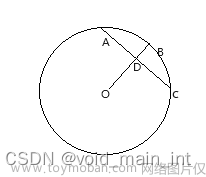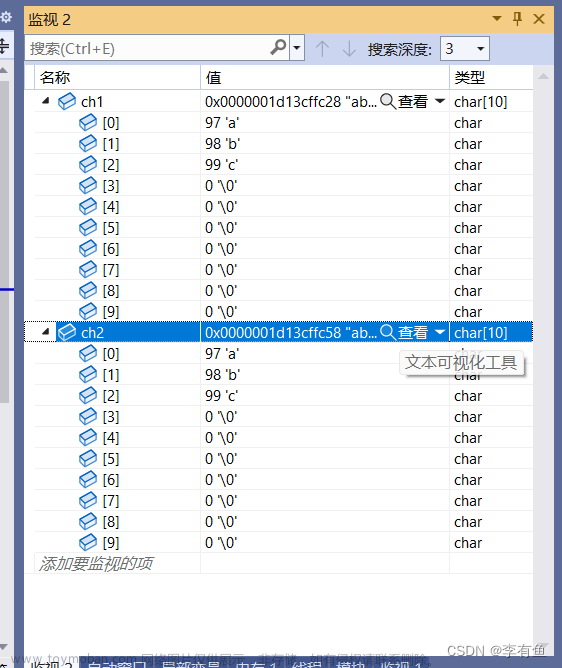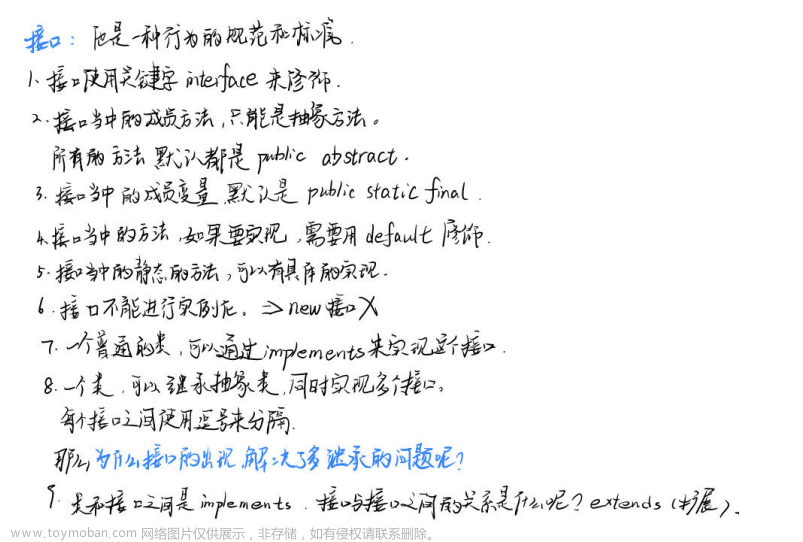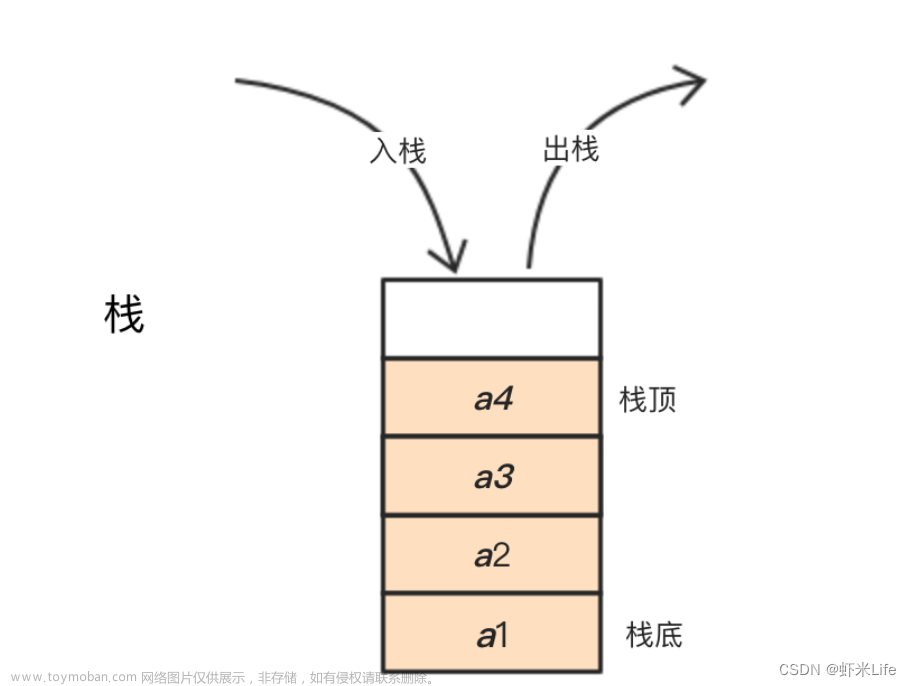
前言
上篇文章学习了C语言字符串函数,只是对字符串进行操作
本节,小编整理了一下C语言中的内存函数,对内存进行操作,只针对会内存块,不针对数据
memcpy
概述
void * memcpy ( void * destination, const void * source, size_t num );
memcpy是对内存拷贝
拷贝的可能是字符串,也可能是整型数组
所以使用 void*
将source拷贝到destination,指定字节数为num
code
#include <stdio.h>
#include <string.h>
int main()
{
int arr1[] = { 1,2,3,4,5,6,7,8,9,10 };
int arr2[10] = { 0 };
memcpy(arr2, arr1, 20);
int i = 0;
for (i = 0; i < 10; i++)
{
printf("%d ", arr2[i]);
}
return 0;
}
arr2是dest,arr1是scr,20是怒num,即字节
将arr1中的前20个字节(即1,2,3,4,5)复制到arr2中
运行结果
1 2 3 4 5 0 0 0 0 0
模拟实现
#include <stdio.h>
#include <string.h>
#include<assert.h>
void* my_memcpy(void* dest,const void* src, size_t num)
{
void* ret = dest; //后面dest的地址可能会发生改变,因此先将dest的首地址存放在ret中
assert(dest && src);
while (num--)
{
*(char*) dest = *(char*)src; //viod*型不能解引用,所以先强制类型转换成char*型,再解引用
dest = (char*)dest+1;
src = (char*)src+1;
}
}
int main()
{
int arr1[] = { 1,2,3,4,5,6,7,8,9,10 };
int arr2[10] = { 0 };
my_memcpy(arr2, arr1, 20);
int i = 0;
for (i = 0; i < 10; i++)
{
printf("%d ", arr2[i]);
}
return 0;
}
对于重叠的内存,交给memmove来处理
其实在vs中,memcpy库函数也可以处理重叠内存,但是在其他编译器不一定可以,不通用
memmove
概述
void * memmove ( void * destination, const void * source, size_t num );
• 和memcpy的差别就是memmove函数处理的源内存块和⽬标内存块是可以重叠的。
• 如果源空间和⽬标空间出现重叠,就得使⽤memmove函数处理。
将1 2 3 4 5拷贝到3 4 5 6 7的位置上
即,最终结果为,1 2 1 2 3 4 5 8 9 10
code
#include <stdio.h>
#include <string.h>
#include<assert.h>
int main()
{
int arr1[] = { 1,2,3,4,5,6,7,8,9,10 };
memmove(arr1 + 2, arr1, 20);
int i = 0;
for (i = 0; i < 10; i++)
{
printf("%d ", arr1[i]);
}
return 0;
}
输出结果
1 2 1 2 3 4 5 8 9 10
模拟实现
前面我们看到,
将1 2 3 4 5拷贝到3 4 5 6 7的位置上

实际上应该是
将5放到7的位置
将4放到6的位置
将3放到5的位置
将4放到4的位置
将3放到3的位置
是后—>前
如果,先将1放到3的位置,那么3这个位置就变成1。再将2放到4的位置,此时最终结果就变成了1 2 1 2 1 2 1 8 9 10
再来看看这种情况:

将5 6 7 8 9拷贝到3 4 5 6 7的位置上
将5放到3的位置上
将6放到4的位置上
(此时原本5 6位置上就没有数字了)
将7放到5的位置
将8放到6的位置
将9放到7的位置
是前—>后

因此,
if(dest<src):前—>后
else:后—>前
模拟code
#include <stdio.h>
#include <string.h>
#include<assert.h>
void* my_memmove(void* dest, const void* src, size_t num)
{
void* ret = dest;
assert(dest);
assert(src);
//分情况讨论
if (dest < src)
{
//前->后
while (num--)
{
*(char*)dest = *(char*)src;
dest = (char*)dest + 1;
src = (char*)src + 1;
}
}
else
{
//后->前
while (num--)
{
//num=18
*((char*)dest + num) = *((char*)src + num);
}
}
return ret;
}
int main()
{
int arr1[] = { 1,2,3,4,5,6,7,8,9,10 };
my_memmove(arr1, arr1+2, 20);
int i = 0;
for (i = 0; i < 10; i++)
{
printf("%d ", arr1[i]);
}
return 0;
}
输出结果
3 4 5 6 7 6 7 8 9 10
memset
memory set 记忆设置,即内存设置
void * memset ( void * ptr, int value, size_t num );
memset是⽤来设置内存的,将内存中的值以字节为单位设置成想要的内容。
code
#include <stdio.h>
#include <string.h>
int main()
{
char str[] = "hello world";
memset(str, 'x', 6);
printf(str);
return 0;
}
注意点:memset是以字节为单位设置内存值的
输出结果
xxxxxxworld
memcmp
和strcmp功能其实差不多
int memcmp ( const void * ptr1, const void * ptr2, size_t num );
⽐较从ptr1和ptr2指针指向的位置开始,向后的num个字节
code
#include <stdio.h>
#include <string.h>
int main()
{
char arr1[] = "abcdef";
char arr2[] = "abqwertyuiop";
int ret = memcmp(arr1, arr2, 2);
printf("%d\n", ret);
return 0;
}
输出结果
0
总结
小编看来,内存函数和字符串函数有很多相似的地方,只不过内存函数针对的内存块罢了。
下一篇更新:数据在内存中的储存文章来源:https://www.toymoban.com/news/detail-708157.html
 文章来源地址https://www.toymoban.com/news/detail-708157.html
文章来源地址https://www.toymoban.com/news/detail-708157.html
到了这里,关于C语言学习系列-->一篇带你看懂内存函数的文章就介绍完了。如果您还想了解更多内容,请在右上角搜索TOY模板网以前的文章或继续浏览下面的相关文章,希望大家以后多多支持TOY模板网!







![[Linux 基础] 一篇带你了解linux权限问题](https://imgs.yssmx.com/Uploads/2024/02/714142-1.png)




